Public restrooms are easy to locate in Japan because of the clear signage and common availability. Nearly every public building and area has restrooms, like workplace buildings, hotels, airports, and parks. Most of these restrooms are divided into two distinct sides for males and females to use.
Unlike the west Japan has a wider variety of toilets types. These include the traditional squatting toilet, which is considered outdated by most Japanese.
Modern toilets such as the Uropean-style or multifunctional high-tech bidet or washlet toilets have replaced the squatting toilet in newer buildings.
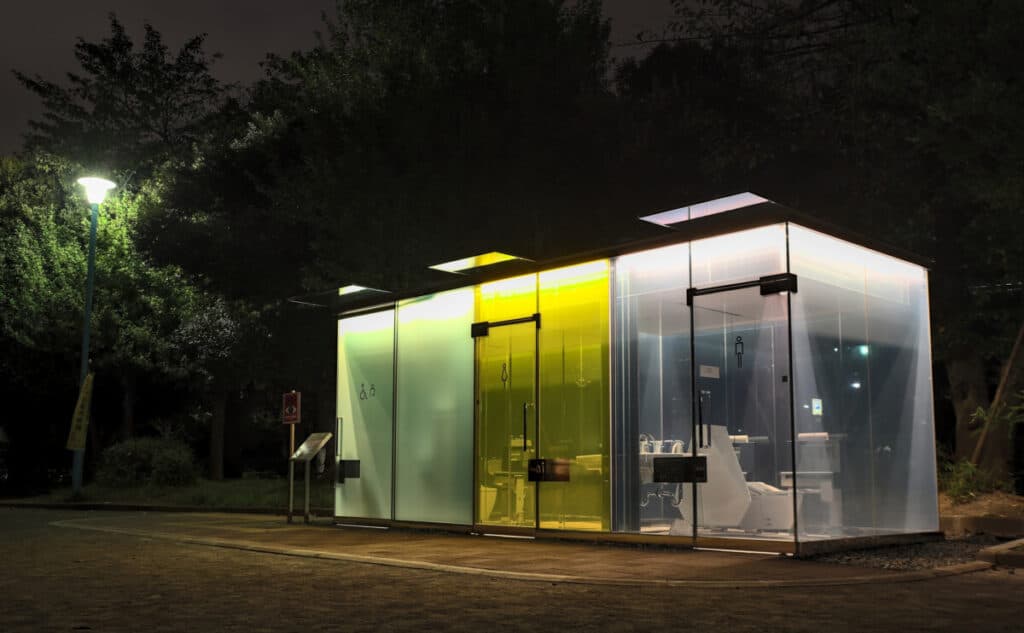
Knowing how to use different Japanese toilets is beneficial to people visiting Japan. Whether you are a first-time tourist or a new resident of Japan, you are likely to encounter one of Japan’s many unique toilets types.
Types of Toilets in Japan
There are many types of toilets in Japan, such as traditional squatting toilets, which have become less common over the years. There are also a variety of other toilets like the washlet that prioritizes cleanliness and has a myriad of functions.
Toilets in Japan have the same use like they do in Western and European societies. The primary purpose of the Japanese toilet ranges from waste disposal to sanitization. Although the Japanese have added many extra features to toilets that can only be found in Japan.
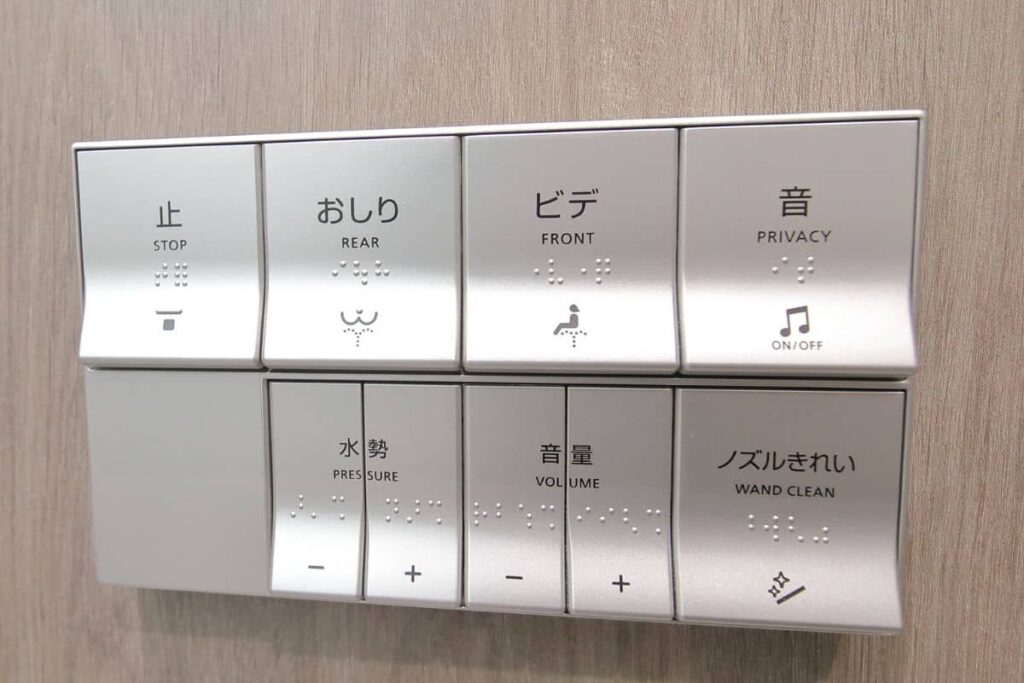
Squatting toilets
Squatting toilets are old, traditional-style Japanese toilets that look like raised basins with a raised hood on one end. These raised hoods are called kinkakushi, and they often have a lever attached to them so you may step on the lever as you stand.
Installation of squatting toilets has become much less frequent in recent years. However, they are still used in public places because people formerly used them, and retrofitting every building would become cost prohibitive.
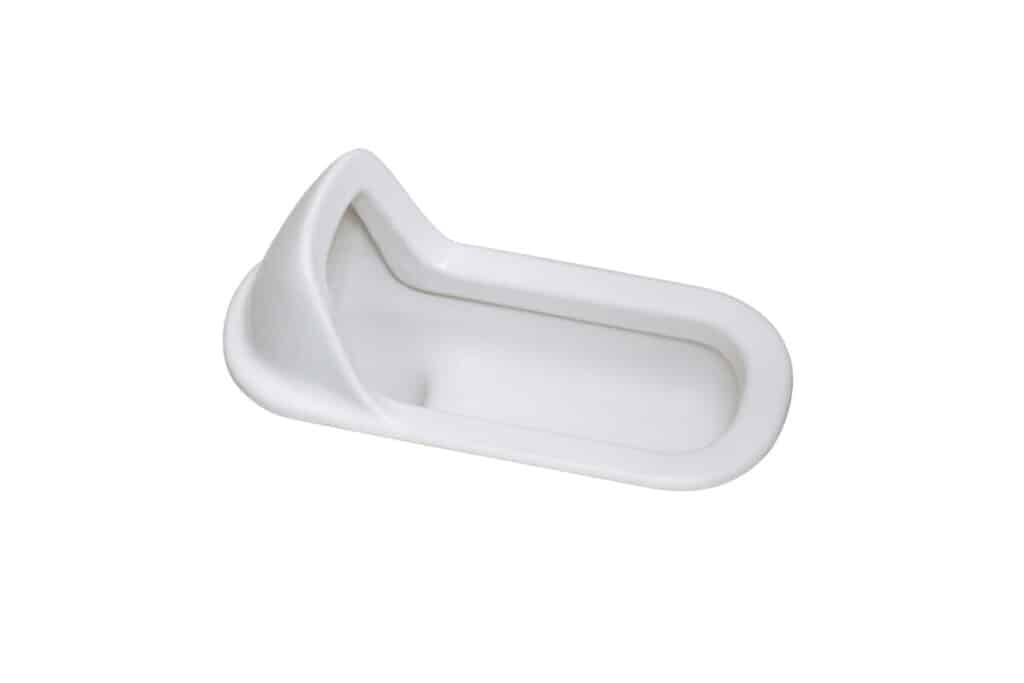
The most common place to find squatting toilets are in old public parks. Many public parks refuse to renovate their bathrooms because of their historical relevance. The cultural significance of these buildings means that you should familiarize yourself with squatting toilets.
A few things to remember when using a squatting toilet include:
- Face toward the kinkakushi (do not sit on it)
- Dispose of toilet paper inside the basin
- Never dispose of sanitary items inside the basin
Washlet toilets
Washlet toilets are a type of toilet that sanitizes after cleaning. These toilets have a seat, which people may either sit on or lift while using the restroom. After use, people use a button to clean their bottom before flushing.
People in Japan enjoy washlet toilets because they promote cleanliness. Washlet toilets are also very comfortable, with a similar design to the popular western toilet.
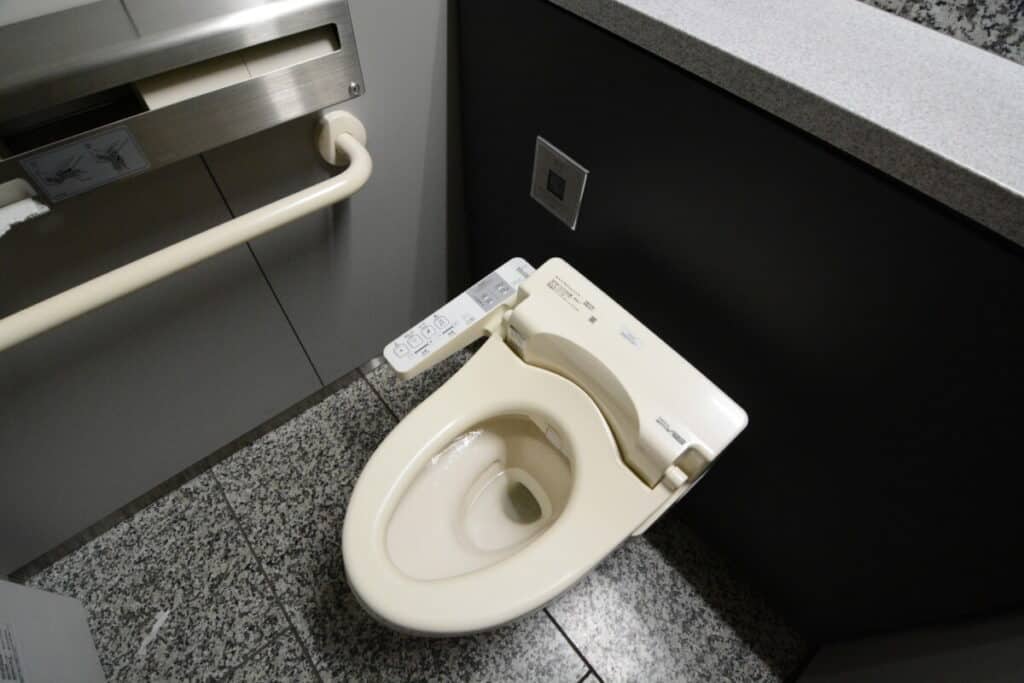
There are several features to the washlet that make it stand out against the other toilets in Japan. One of the most prominent features is its ability to spray/wash and dry the users’ bottom afterward.
The sanitation process of the washlet toilet has many adjustable spray speeds and some washlet toilets even have heated drying features to prevent the need for toilet paper. Without a need for toilet paper, people save money and the environment.
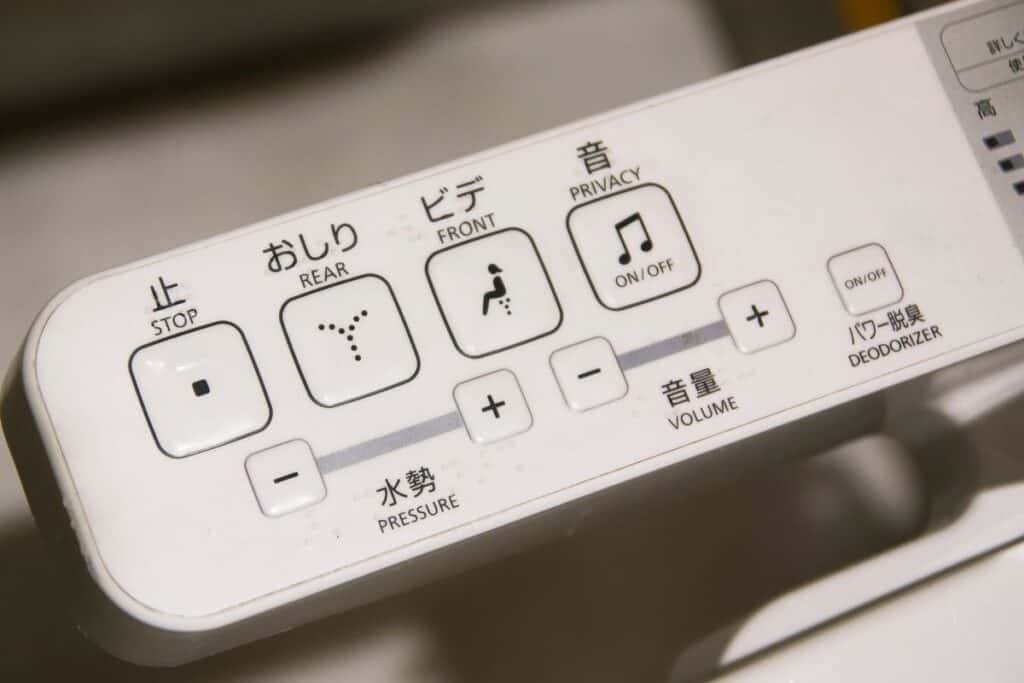
Many people say that the Japanese washlet is highly similar to the European bidet functionally and aesthetically.
Western-style toilet
Western-style toilets are a type of toilet that allows you to sit on them. They have a lid that you open manually. Depending on the model, some toilets may also have lids that automatically open as you approach the toilet.
This toilet gets its name because of how similar it appears to toilets used by Western society. Japan adopted the idea for this toilet from Western culture and added many high-tech options.
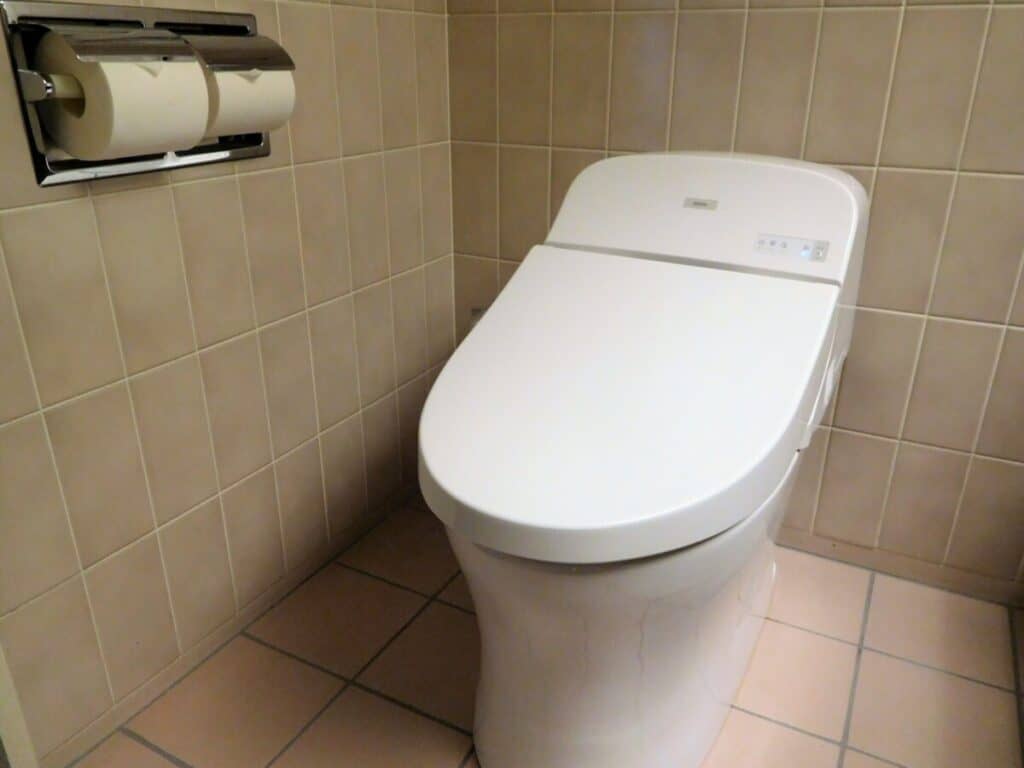
They are the most common type of toilet that you may find in Japan because of their practicality and efficiency.
The Western-style toilet is also affordable, easy to maintain, and compact. Some western-style toilets have clean water sinks on the top where people can wash their hands. This makes them an even more common solution to saving space in public environments.
Multipurpose toilet
The multipurpose or multifunction toilet is a common toilet found in public restrooms across Japan. Several accommodations to the multipurpose toilet make it a great toilet for people who have trouble using regular toilets.
The multipurpose toilet is designed for functionality, with a proper seat with limited barriers. Typically, handicapped and family restrooms use multipurpose toilets because of how spacious and accommodating these toilets are.
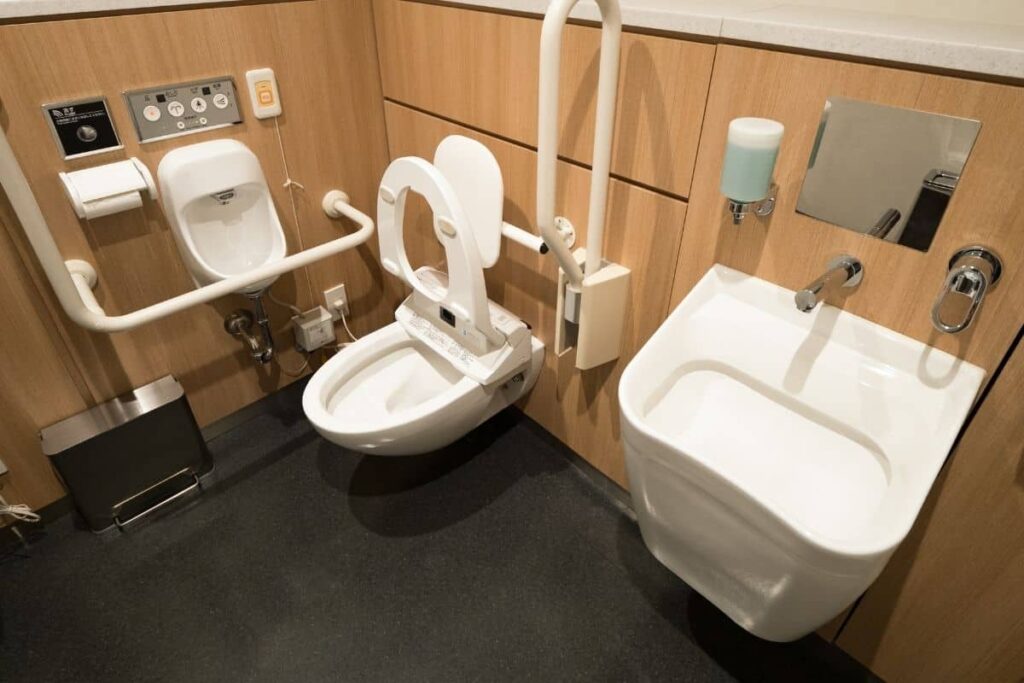
Unfortunately, not all public places have multipurpose toilets because of the expense. Hospitals, airports, shopping centers, and places inside large cities are more likely to have multipurpose toilets because of the high demand. Rural areas in Japan are less likely to have multipurpose toilets because of the expense.
Urinals
Urinals are a common toilet found only in men’s restrooms as in the west. They are large basins used for urination, which public facilities installed in rows along one or more walls.
Most urinals use levers or buttons to flush after use. Typically, you can find the flushing mechanism on the wall behind the urinals. Some urinals also use an automatic flushing mechanism that will flush the toilet after the person walks away.
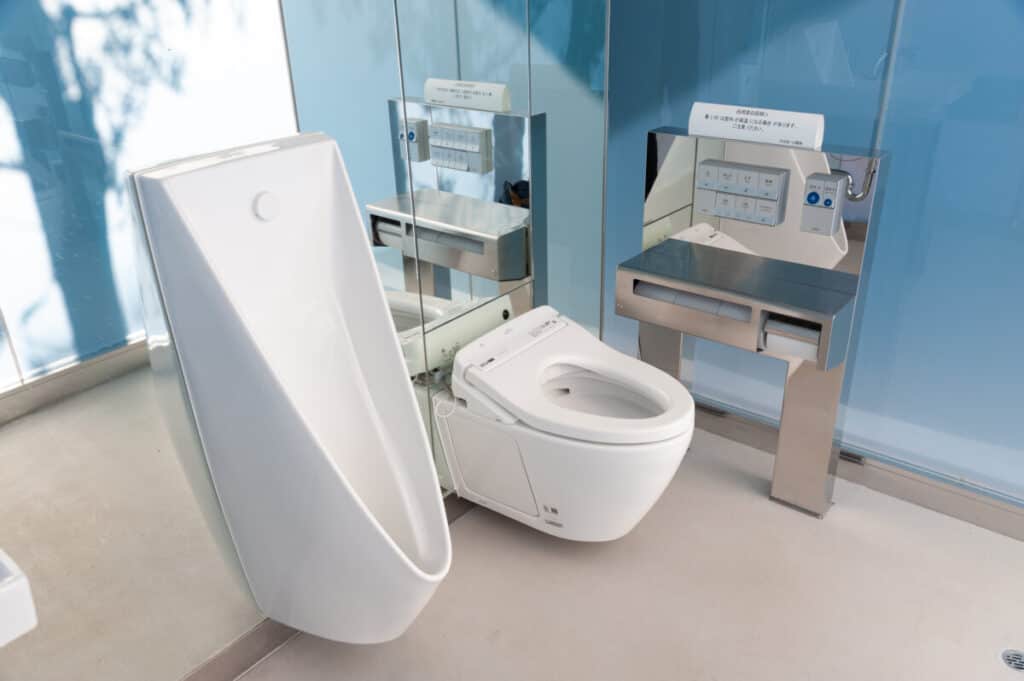
About Toilets in Japan
Japanese culture varies in many ways, including how you may use the public restroom. Some universal rules are consistent such as allowing free use of public restrooms or a general preference for sitting.
There are many exclusive considerations for people visiting or residing in Japan. One of the most common considerations for people in Japan is the type of handles used for flushing.
Many Japanese toilets are self-flushing, which means you can stand, and the toilet will register its automatic need to flush.
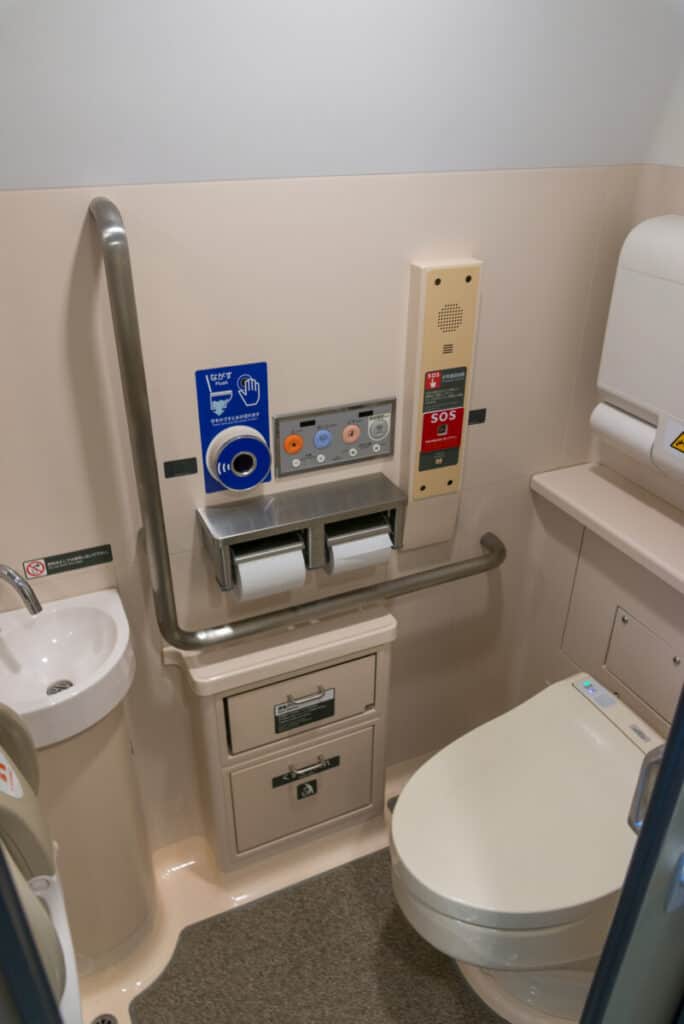
Finding public toilets
There are public toilets in almost every public building. You may find these by observing any of the many public restroom signs.
Restrooms in Japan are called “toilets”. When asking someone the location of a restroom, refer to them as the toilet to avoid a misunderstanding.
Common restroom signs that mean toilet include the following:
| Japanese | Pronunciation | Other meaning |
| お手洗い, 御手洗い | otearai | informal |
| 洗面所 | senmenjo | formal |
| 化粧室 | keshoshitsu | (powder room), formal |
| トイレ | toire | Casual for toilet |
| WC | Symbol for toilet | |
| 厠(かわや) | Squatting toilet, old type toilet | |
| toirewa doko desuka? | Where is the toilet? |
Japan typically divides its bathrooms into females and males. Signs will show a universal symbol for females, a stick figure wearing a dress (in red), and the universal symbol for males, a stick figure in pants (in blue).
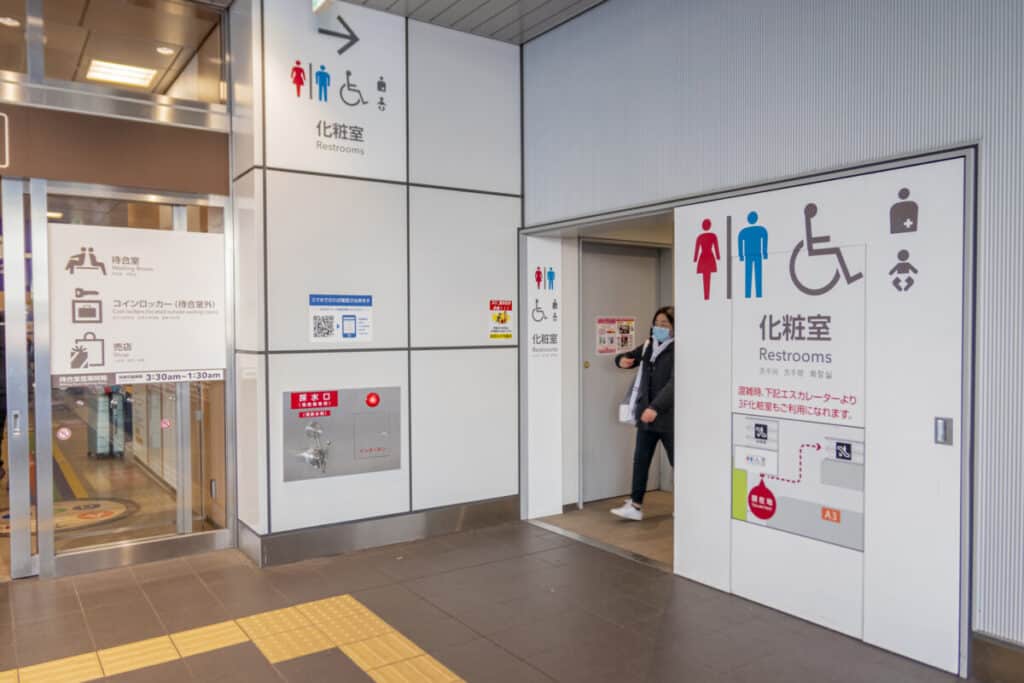
Finding gender-neutral bathrooms is less common in Japan. If you desire privacy a family restroom can put you at ease. Family restrooms offer a more private bathroom experience.
Disposing of toilet paper
You can flush toilet paper down the toilet directly. Toilet paper is dissolvable, so it will not clog your sewer system.
Japan has a strong sewer system that is capable of flushing thick toilet paper and bodily waste. However, it cannot flush other items like sanitary products, diapers, body wipes, or items aside from bodily waste.
Women may use separate bins inside their bathroom stalls to dispose of sanitary products. There are also trash cans in bathrooms to dispose of diapers, baby wipes, or other items.
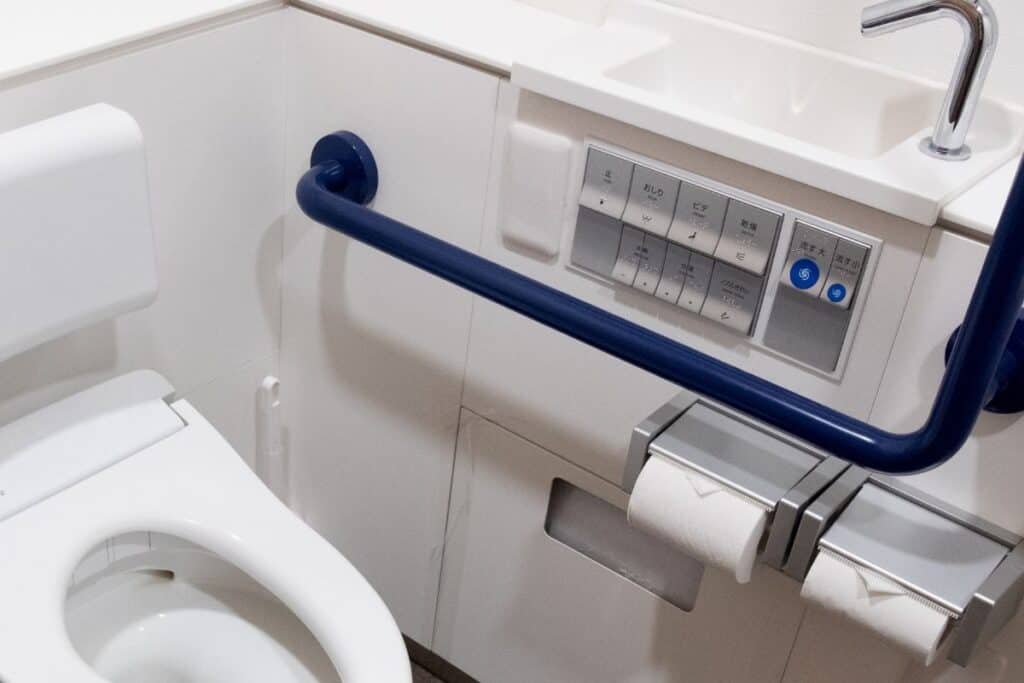
Flushing toilets
Japan toilets have several types of flushing methods, which can be confusing for first-time visitors. The most common types of flushing methods are levers and handles.
These are common to overseas toilets. However, the handle faces downward and gets lifted upward to flush.
Japanese toilets may also use a button on the wall for flushing. These buttons may require pressing or a wave of the hand to flush.
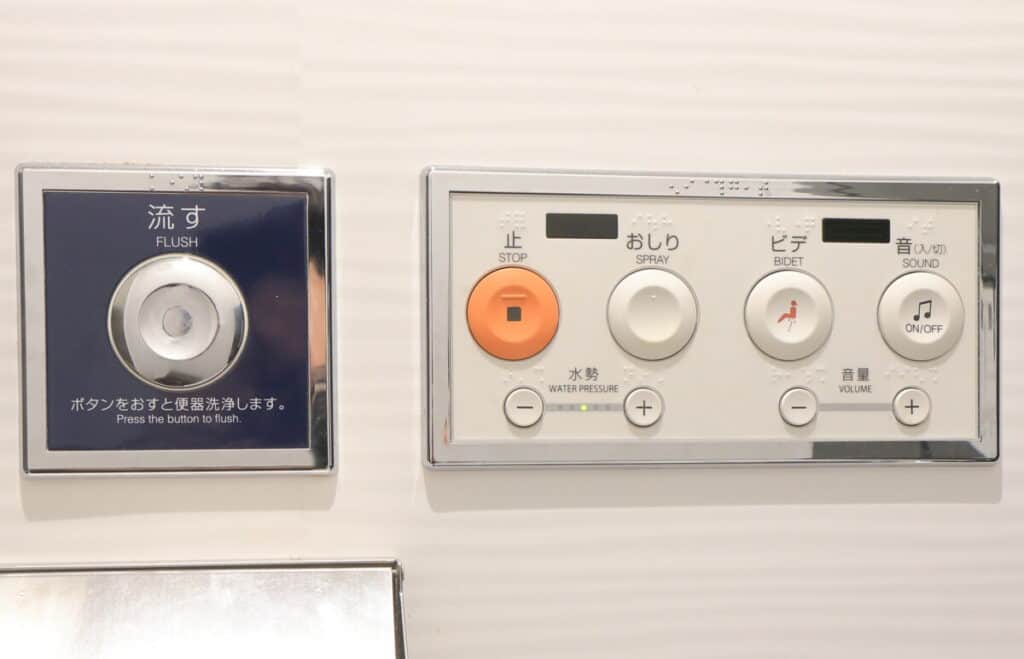
Finally, many Japanese toilets also feature automatic flushing. The Japanese created this innovative design to reduce germ spreading and increase cleanliness.
Universal practices
Universal practices like good hygiene and politeness are always applicable in Japan when it comes to using the restroom. General courtesy is important in Japan, mainly because of what it does to your reputation.
Universal practices that you should always follow in Japan include:
- Washing your hands after using the restroom
- Waiting in line for your turn to use the restroom
- Disposing of all items properly
- Flushing the toilet after you use the restroom
These practices are not just a measure of general courtesy. The universal toiletry practices impact local sanitation, which can affect the health of others—cleaning your hands and flushing the toilet when you are two simple ways of doing your part to sanitize your spaces after use.
Emergency call button
Many toilets (but not all) have an emergency call button next to them, which reads “yobidashi”. Anyone may press these buttons to alert an attendant in the case of an emergency.
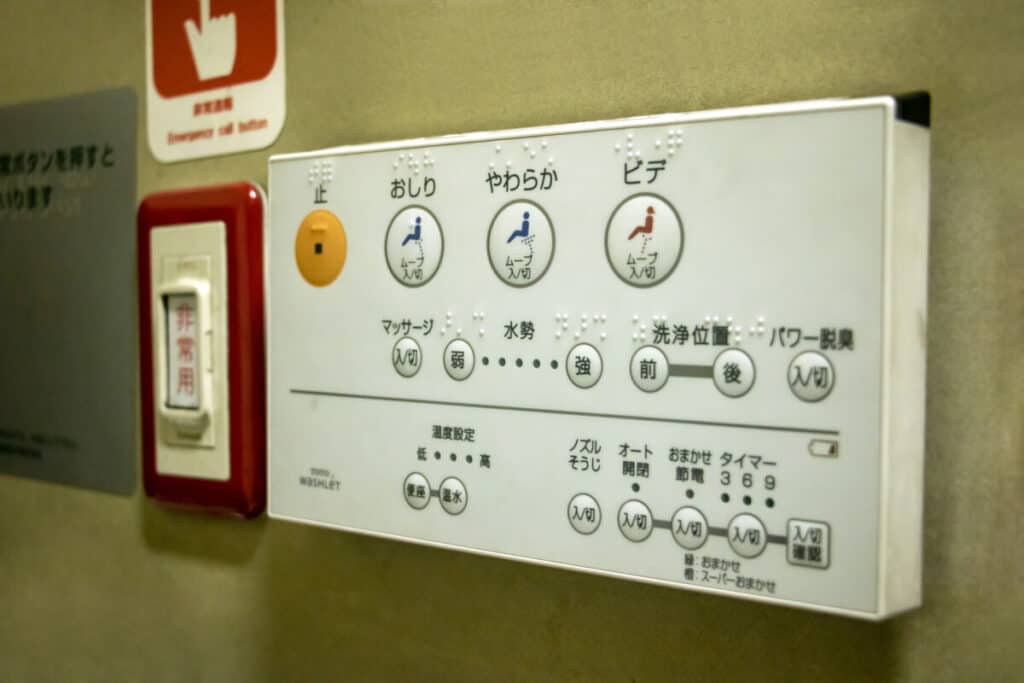
People using the restroom can find an emergency button in family bathrooms or bathroom stalls designed to accommodate people with disabilities. Emergency buttons are designed for situations where someone is sick or in immediate danger.










